distracted driving
Latest
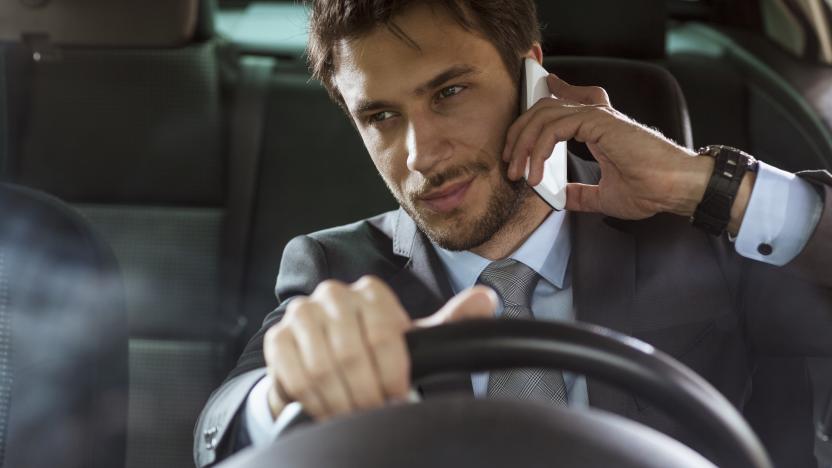
UK trials roadside van that detects if drivers are holding their phone
The sensor test vehicle can also check whether drivers and passengers are wearing seatbelts.
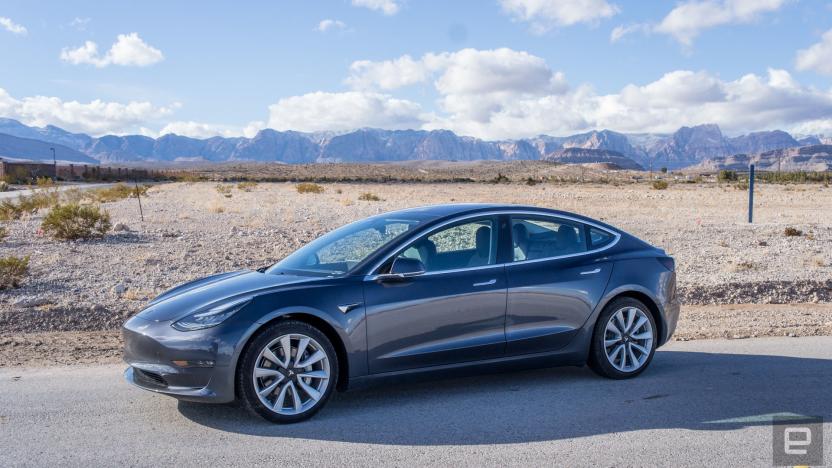
Tesla will disable in-dash video games while its cars are in motion
Tesla is disabling the option to play games on the main touchscreen while driving.
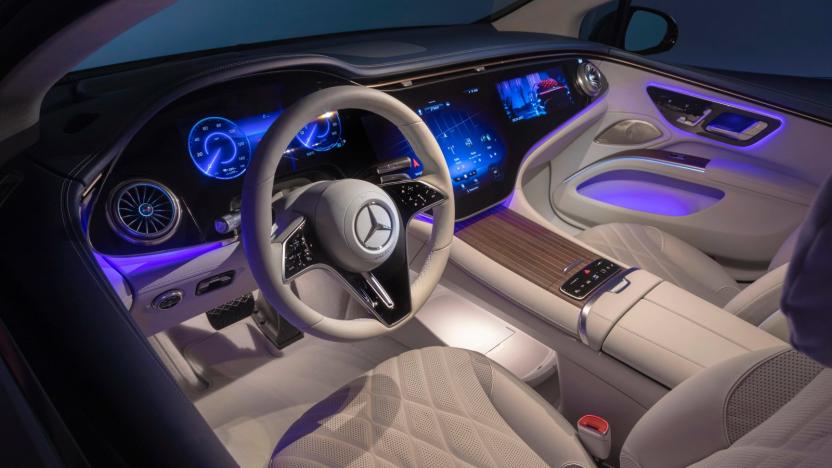
Mercedes-Benz recalls EQS over error that allowed dashboard video playback while driving
Mercedes-Benz has issued a server-side update to fix an oversight that had allowed owners of its EQS EVs and recent S-Class sedans to watch video content on the 56-inch MBUX Hyperscreen displays found in those cars while they were in motion.

Tesla’s in-dash video games can be played even while driving (updated)
More than 3,100 people died in crashes involving distracted drivers in the US in 2019.
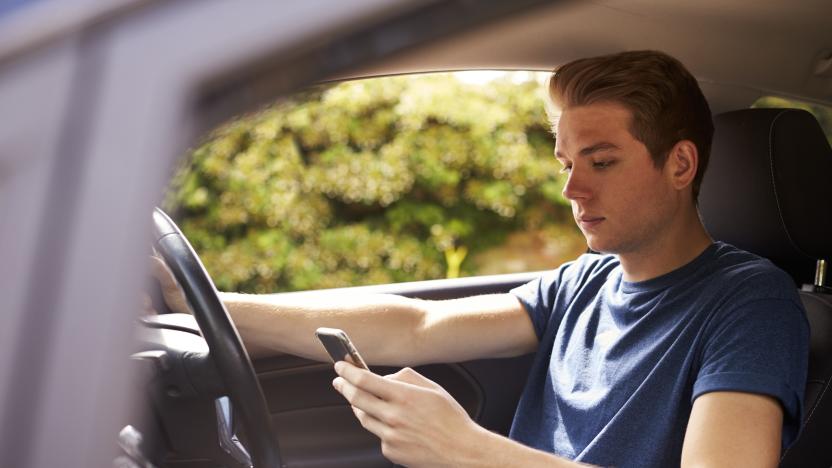
UK closes loophole that allowed using your phone while driving
The UK has closed a legal loophole that allowed using your phone while driving under certain circumstances.
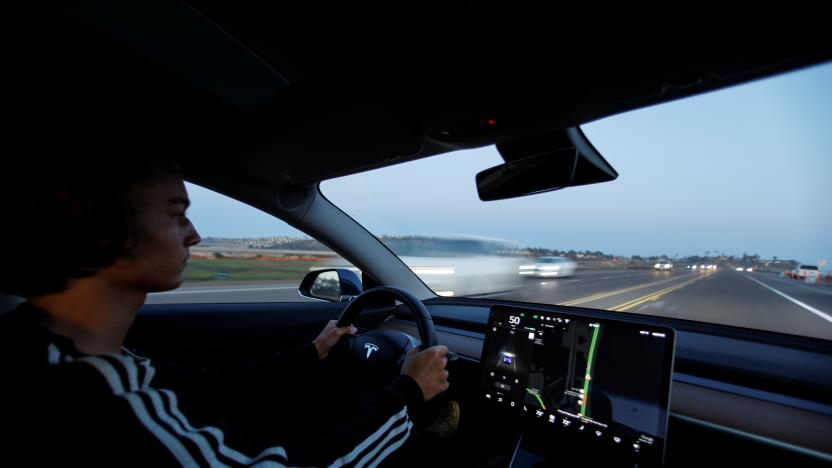
Tesla camera hack shows how your EV might monitor driving habits
A hack has shown that Tesla's interior camera could be used to check that drivers are paying attention.

Honda will show off its in-car AI assistant at CES
At CES 2020, Honda says it will finally show off its long-promised in-car personal assistant. The automaker has been working on its own digital helper since 2018 when it announced a partnership with SoundHound. Aside from the usual claims of "unprecedented" speed and accuracy, the company doesn't say too much about how the tool compares to AI like Google Assistant and Siri. It does note you'll be able to wake it by saying "OK Honda," and that it'll be able to infer context about a question based on your current location, as well as any previous queries.

Regulators are the only ones who can save us from distracted drivers
I ride my trusty Vespa scooter all around San Francisco. In the Bay Area, it's more convenient for getting around than a car, and I can park almost anywhere. Riding on two wheels places you above most drivers and makes you hyperaware of others on the road, and what I see more often than not terrifies me. Most of you are on your phones when you should be driving. It's time for automakers and the US regulatory agency, the National Highway Traffic Safety Administration (NHTSA), to do something about it.
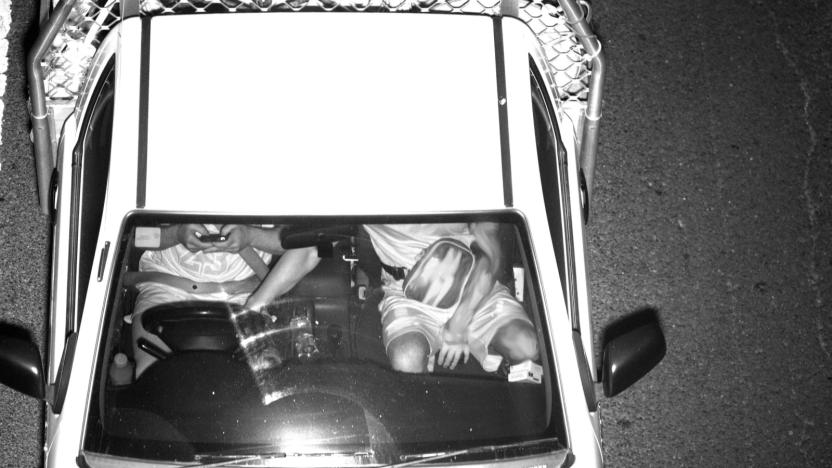
Australia rolls out AI cameras to spot drivers using their phones
Phone use while driving remains a problem in many parts of the world, in no small part due to the difficulty of enforcing laws. How do you catch someone in the act? Australian police might not have that problem. The New South Wales government has started using the first cameras that can automatically detect when drivers are using their phones. The system uses AI to review photos for telltale signs of phone use, with human reviewing the flagged images to prevent any false positives. There will be both fixed and trailer-mounted cameras on hand to spot distracted motorists.
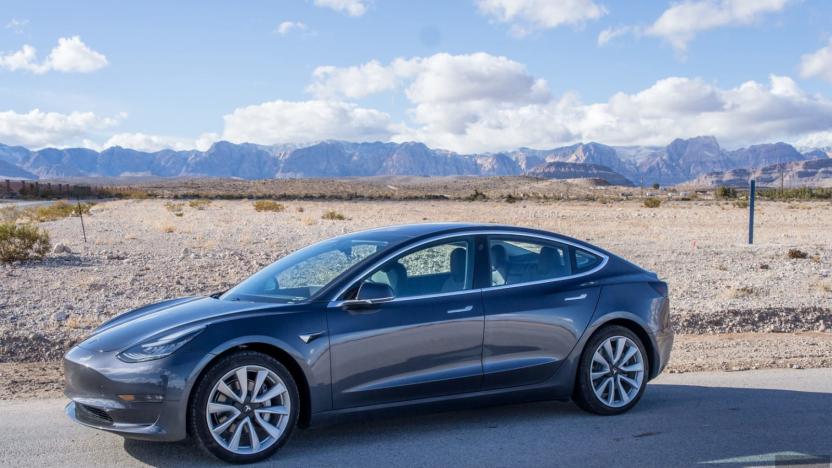
NTSB says Tesla Autopilot was partly to blame for 2018 crash
The National Transportation Safety Board (NTSB) cited both driver error and Tesla's Autopilot design as the probable causes of a January 2018 crash, in which a Model S slammed into a parked fire truck at about 31 mph. According to the report, the driver was distracted and did not see the fire truck. But NTSB says that Tesla's Autopilot was also at fault, as its design "permitted the driver to disengage from the driving task."

Jaguar’s ‘sensory steering wheel’ heats up to deliver notifications
Much of the technology developed for new cars has to do with safety, and that's for good reason -- in 2017, distracted driving killed 3,166 people in the US. Like other manufacturers, Jaguar Land Rover hopes it can prevent fatalities, but the way it wants to get there is unique. The company has developed a steering wheel that heats up to give drivers signals, like when to turn or that they're approaching an intersection. According to Jaguar, the "sensory steering wheel" will help drivers keep their eyes on the road.
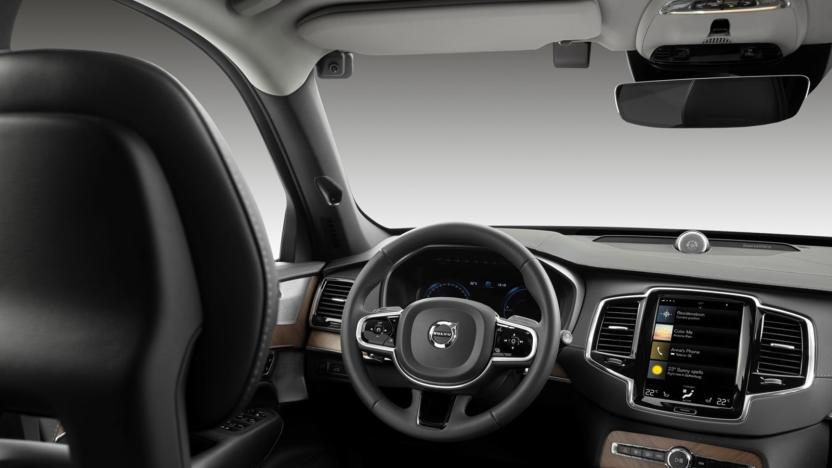
Volvo will use cameras to fight drunk and distracted driving
Volvo plans to use cameras and sensors inside cars to combat drunk and distracted driving. The vehicles may intervene if a driver doesn't respond to warning signals -- cars may limit their speed, alert the Volvo on Call service (which will contact the driver) or perhaps even slow down and park. Volvo on Call may send additional help if necessary.

Intel Labs measures cognitive workload of distracted drivers, we go eyes-on with the demo (video)
Many studies have shown that any kind of distracted driving is a bad thing, but Intel wanted to take a closer look at our driving behavior to determine if we could avoid it in the first place. Paul Crawford, a senior research scientist in Intel's Interaction and Experience Research Lab, sought to do just that in a comprehensive investigation that seeks to understand not just where drivers are looking, but how they're thinking. By doing this, Intel hopes to alert the driver of any mental warning signs before he or she even gets behind the wheel. At a recent Research @ Intel event in San Francisco, Crawford used a racing car gaming set-up to demonstrate both visual and mental diversions with eye-tracking software and a functional near-infrared spectrometer headband. The latter is used to gauge the metabolic activity and cognitive workload of the brain under different driving conditions, which in this case fluctuated between a peaceful drive and a high-speed chase. Crawford also threw in a few questions and mathematical problems at the test subject to complicate matters. As you might expect, the brain was highly active during the more challenging scenarios and less so in the other. Crawford told us he hopes that the findings will point to ways we can optimize our environmental conditions and taskloads so that we can perform better, not just when driving but in everyday tasks as well. To see the demo in action and hear Crawford's words for yourself, check out the video after the break. Michael Gorman contributed to this report.

Study: voice-controlled interfaces unsafe for driving
I asked, "Siri: Is it safe to be driving and talking to you?" Siri conducted a web search and probably won't be pleased with the results. In a recent AAA study, researchers found that letting drivers text and send email with voice commands is actually more distracting just simply talking on a cellphone. "Compared to other activities studied, we found that interacting with the speech-to-text system was the most cognitively distracting," wrote the researchers. "This clearly suggests that the adoption of voice-based systems in the vehicle may have unintended consequences that adversely affect traffic safety." The research is sure to have criticism. A study (PDF download) by the National Highway Traffic Safety Administration found that hand-held phone use was less safe than hands-free, but that study didn't measure text-to-speech features. Not surprisingly, the Alliance of Automobile Manufacturers was skeptical. "We are extremely concerned that it could send a misleading message, since it suggests that hand-held and hands-free devices are equally risky," the association said in a statement. The AAA study, sponsored by the American Automobile Association's Foundation for Traffic Safety, was published today in a report titles "Measuring Cognitive Distraction in the Automobile." The AAA has been a longtime advocate for a complete ban on texting while driving, and discourages drivers from talking on the phone, whether hand-held or hands-free. Apple has been promoting its Siri Eyes Free technology and what it calls iOS in the car. Several automakers, including BMW, (BMW supports Eyes Free, but not iOS in the Car) Mercedes, Honda and GM are getting on board.

Samsung announces Drive Link, a car-friendly app with MirrorLink integration
Until self-driving cars become mainstream, it's best to keep eyes on roads and hands off phones. With this in mind, Samsung's debuting Drive Link, an app that balances in-car essentials with driver safety, complete with approval from the no-nonsense Japanese Automotive Manufacturers Association. It's all about the bare essentials -- navigation, hands-free calling and audiotainment from your phone-based files or TuneIn. Destinations can be pulled from S Calendar appointments or texts without trouble, and the text-to-speech feature means you won't miss a message, email or social media update. The best bit is that via MirrorLink, all these goodies can be fed through compatible dash screens and speaker systems. Drive Link is available now through Sammy's app store for Europeans sporting an international Galaxy S III, and will be coming to other ICS handsets "in the near future."

Parrot Minikit Neo helps you focus on driving, making off-handed Matrix references
Like talking on the phone while driving, but hate all of the crashing it sometimes entails? Parrot's bringing its Minikit Neo to the states later this year, bringing a free Android / iPhone app along for the ride that helps you locate your car, set parking meter fill-up reminders, schedule driving breaks and set auto-replies like, "I'm driving and will call you later," for those times when you're driving and will call people later. The sun-visor-clipping car accessory can connect two Bluetooth-enabled devices simultaneously and features a vibration sensor that'll turn it on and off as you enter and exit the vehicle. The Neo will arrive stateside in September for $100.

Scosche cellControl locks your device while driving, tattles on your text habit
Trying to keep the points off your record, but just can't resist the urge to tweet, text and talk behind the wheel? Maybe it's time you gave up on that whole "self-restraint" schtick and leaned on technology to keep your cellular inhibitions in check. Scosche's cellControl might do the trick, it pairs bit of bluetooth-enabled automotive hardware with a feature-blocking smartphone app to keep your handset under lockdown when you're on the go. It even rats you out if you deactivate or uninstall the system -- automatically sending a text message or email to a "designated administrator," just in case you fall off the wagon. The system boasts compatibility with over 1200 devices across Android, Blackberry, Symbian and Windows Mobile 5 and 6. Artificial restraint will set you back $130, you know, in case self-control and other distracted driving apps aren't doing the trick. Hit the break for the system's official press release.

Auto-insurance researchers: 'Cell phone bans don't help reduce crashes'
All those fancy in-car docks and voice navigation? Utterly pointless. At least according to the Insurance Institute for Highway Safety, who reckons that it's not the phone that's the issue, but "the full spectrum of things that distract." The IIHS (funded by a group of car insurers) compared crash data between states that had instituted cell phone bans and those that hadn't. According to its research, while the ban had reduced phone use (whoa, really?), it hadn't helped reduce crash rates. The National Transportation Safety Board has presented several studies linking cell phone use to an increased chance of crashing and their latest proposals would ban most hands-free systems found in major car makers' vehicles today. Hear that? That was the sound of hundreds of third-party accessory manufacturers recoiling in horror.

Sprint announces Drive First app to stop distracted driving, expects you to pay $2/month for it
Driving whilst distracted is becoming enough of a problem for our various government agencies to start looking into ways to proactively prevent it, rather than just pass laws against it, but Sprint is being more proactive than most. It's announced an app called Drive First, developed by Location Labs, which won't be available until sometime in the third quarter. The app runs on Android and basically puts your phone into lock-down mode "when driving is detected," automatically sending incoming calls to voicemail, auto-replying to texts that you're unavailable, and preventing you from using much of any applications outside mainstream navigation fare. As always with these apps we're not sure just how they'll differentiate between driving and, say, sitting on a train, and we're guessing they'll be just as effective at locking out those riding shotgun, but for parents worrying about whether Junior is texting when he should be driving home from band practice it could be a good solution. That solution, however, will cost those 'rents $2 per month -- and certainly won't earn them any love from their angsty teen.

New York DOT now adding 2-point driver's license penalty for talking on the phone while driving
It has been illegal to talk on a cell phone while driving in New York for years now, but the state has just steeply upped the penalties associated. The $100 fine which is currently imposed has been joined by a 2-point penalty on the driver's record -- which should serve as a real deterrent for most. The DMV has estimated that one in five crashes now involve so-called distracted drivers, resulting in about 5,000 deaths last year. So please, keep your eyes on the road.










